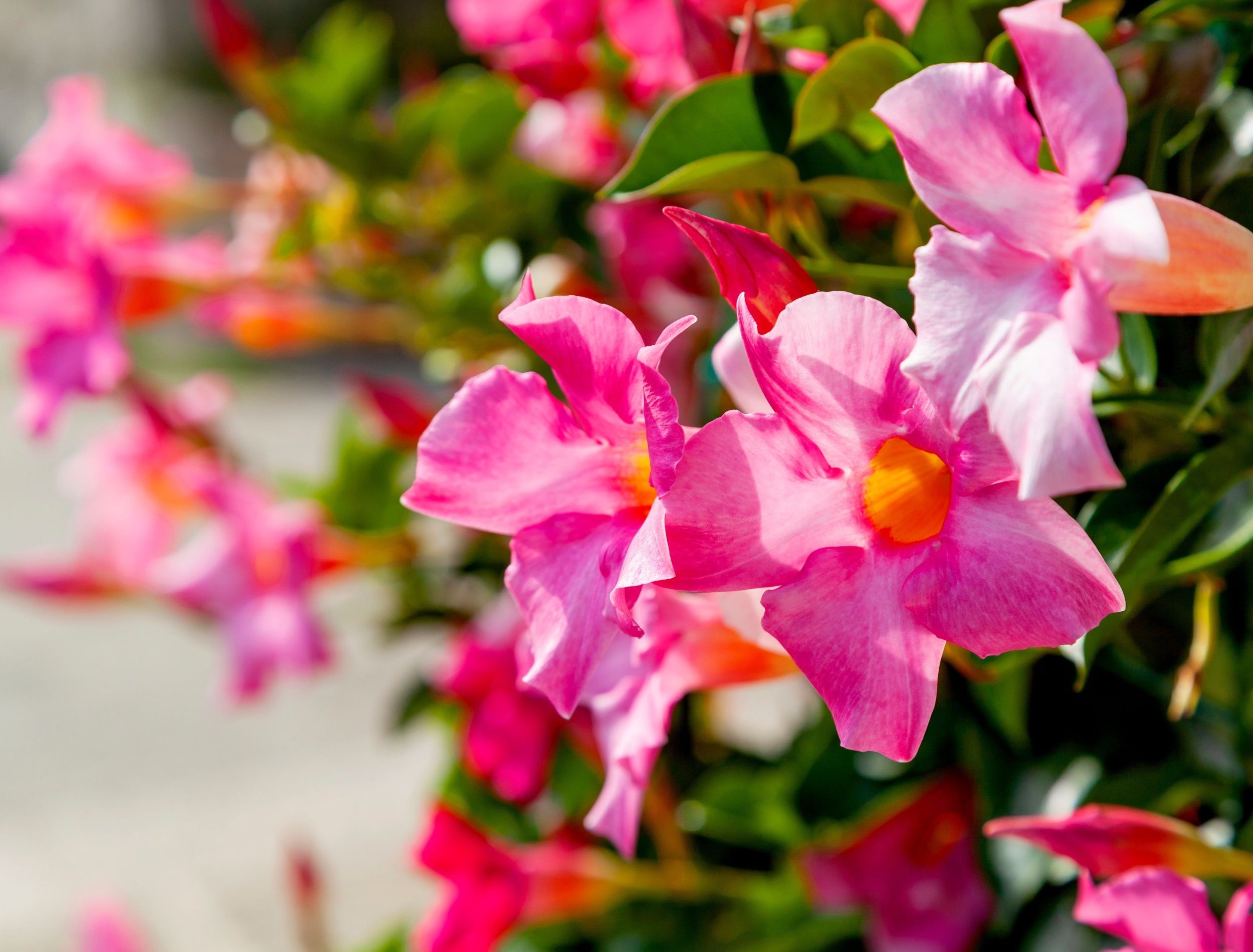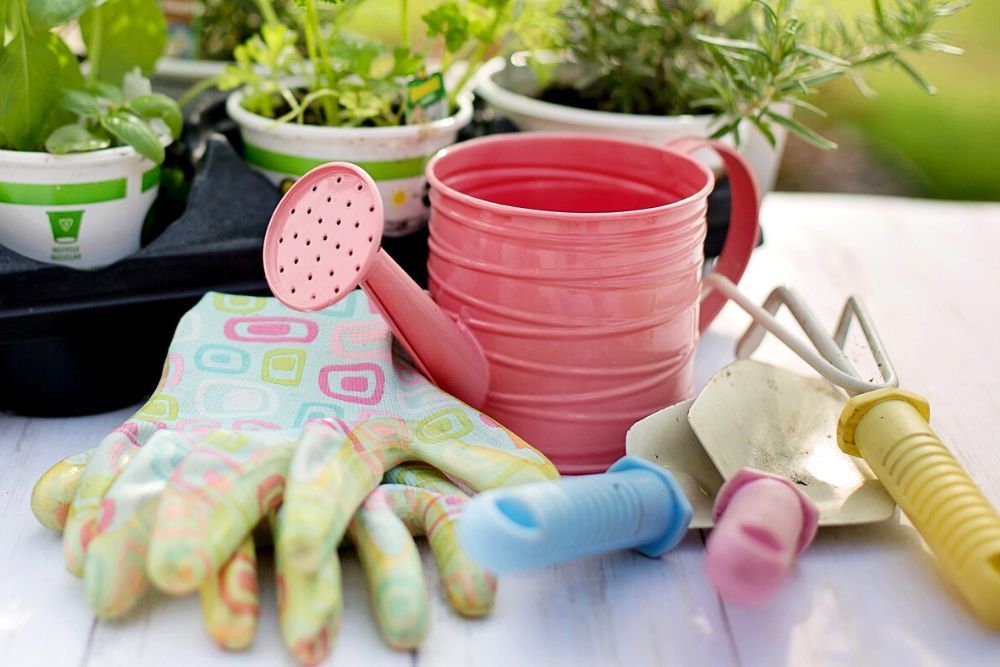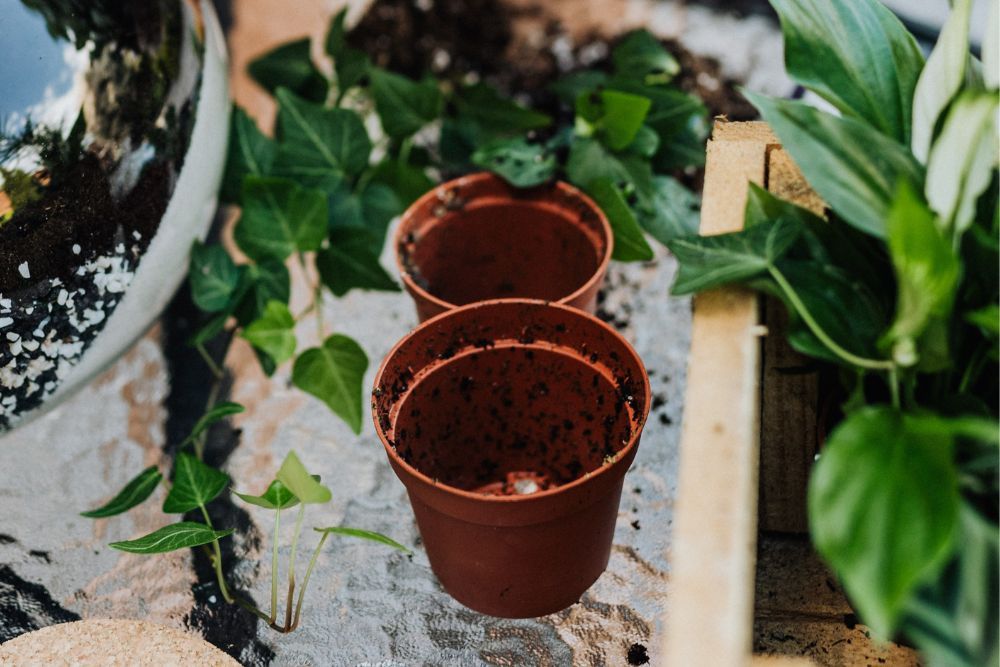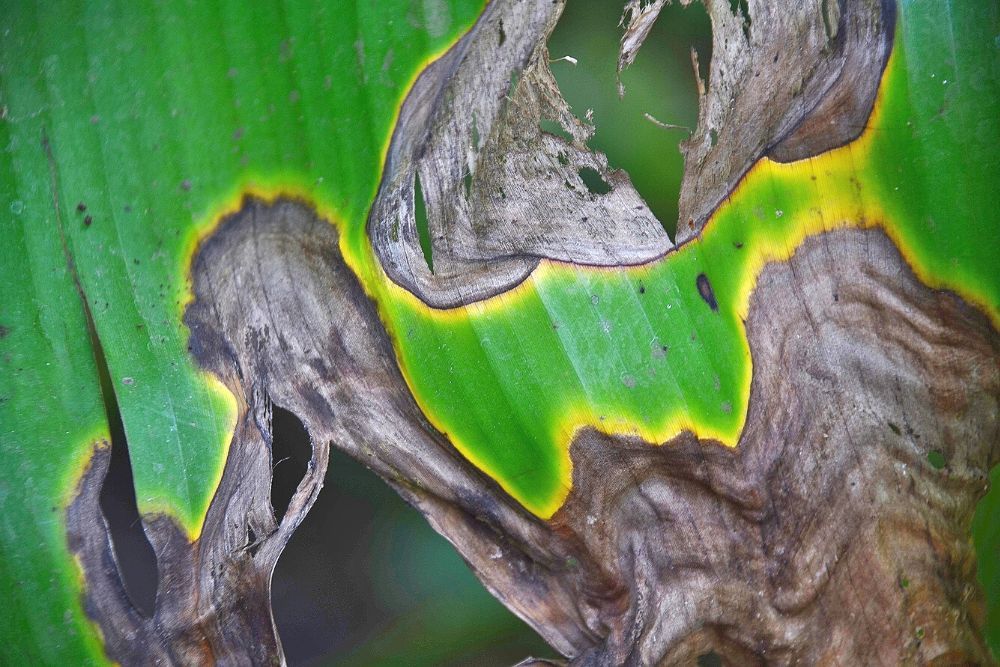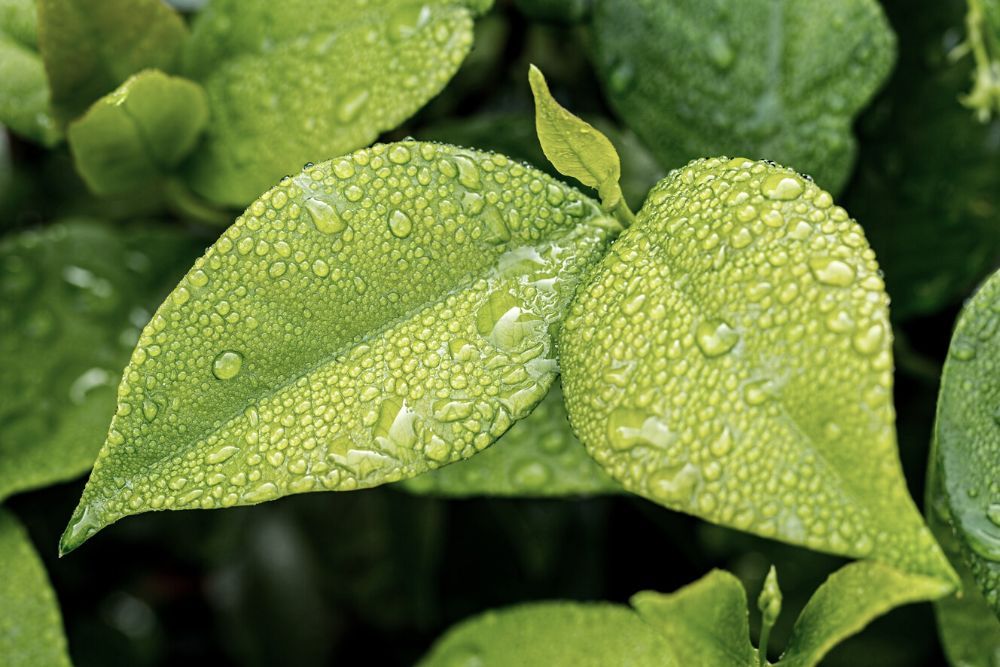Mandevilla vines are best known for their vibrant yellow, deep red, or magenta and snowy white flowers. They grow up to 8 or 10 feet tall on woody stems with deep, green leaves and come from the tropical regions of North and South America.
Depending on the area of the country you live in, these vines will require different living conditions. In regions that stay hot year-round, mandevilla vines can be grown outdoors. If you live in a colder climate that experiences harsh winters, it’s best to move your plant indoors before the first frost of the season.
Mandevilla vines will always appreciate a warm, indoor environment. That being said, they need quite a bit of space to support their lengthy stems. With the right type of pot and planting set-up, you’ll be able to create the perfect living conditions to grow healthy, blossoming mandevilla vines indoors. Follow these five steps to get started!
A Step-by-step Guide On How To Grow Mandevilla Vines In Pots
Step 1 - Gather Your Materials
Image credits: Jill Wellington via Pixabay
Before you select the type of pot you'd like to use, make sure you have all the materials to tackle this project.
- Gardening gloves
- Small hand shovel
- Watering can
- Well-draining potting soil
- Trellis, lattice or garden stakes (if applicable)
Step 2 - Select The Right Pot
Image credits: Karolina Grabowska via Pexels
Choosing the correct type of pot for your mandevilla vines is key to growing a healthy plant. Because of this plant’s potential length, the pot needs to offer upward or downward vertical support. It also has to have excellent drainage, so it's recommended to get a drainage tray or drill holes.
If you want your plant to grow upwards, select a pot with enough space to hold a lattice, trellis, or garden stakes. This feature will keep your stems secured and encourage the plant to grow in your designated direction. It is especially useful if you have limited space to grow your plant indoors. If you pick a more decorative variety, a trellis will also offer an aesthetic touch to your living space.
However, if you would like your plant to grow downwards, a hanging basket or plant stand is an excellent option. It is a great way to add more dimension to your space. Your plant will also use surrounding walls for additional support as it develops.
Because mandevilla vines do not like to be cramped and have fairly thick roots, choose a pot 10-12 inches in diameter. If you’re working with a young plant, it will use all of the space that you provide. If you notice it is outgrowing its space, you can size it up to a pot around 20 inches in diameter. Be mindful that this plant does not like to be moved around frequently, so when you’re first choosing a pot, make sure it’s large enough to be its long-term home.
Step 3 - Prepare Proper Soil Conditions
Image credits: Teona Swift via Pexels
Mandevilla vines can live in a variety of soil types and pH conditions, including acidic, alkaline, and neutral. However, the soil you select must be moist and fertile.
Loam soil contains a balance of sand, silt, and clay, and it’s the best soil to choose for this plant because of its ideal drainage properties. To help promote fertile soil, it’s also a great idea to fertilize your plant bi-weekly when it is actively growing in the summer.
Step 4 - Planting Tips & Precautions
Image credits: GLady via PIxabay
When putting your mandevilla into its new pot, give it a quick visual health scan. Pull away any yellowing leaves and check for any common pests. Mealybugs, whiteflies, and red spider mites are common critters that like to lurk on the leaves of this vine.
If you’ve purchased a new plant, the chance of these being found is very low. However, if you are bringing your plant indoors from the garden, this is an important precaution to take.
Place your plant deep enough into the soil so that its roots are fully covered. There should be enough soil in your pot to fill it approximately one inch from the rim.
Step 5 - Imitate Tropical Conditions
Image credits: Steve Buissinne via Pixabay
Because mandevilla vines come from the tropics, create an indoor environment for your plant that imitates these hot and humid conditions. You can do this by adjusting moisture, temperature, and lighting. Aim to follow these directions as soon as you’ve potted your plant and throughout its entire life.
Moisture
Water your mandevilla plant frequently. Aim for once a week in the winter and twice a week in the summer. Your plant will require more water in the warmer months when it’s preparing to bloom its flowers. When watering, ensure you soak the soil thoroughly until water starts seeping into the drainage tray. Remove any excess water sitting in the tray after watering to prevent root rot.
Temperature
Mandevilla vines prefer moderately warm temperatures above 45 degrees Fahrenheit. They can survive in temperatures that drop to around 35 degrees Fahrenheit, but beyond this, your plant loses resilience and may be permanently damaged. Choose a place for it to live in your home that does not experience drastic temperature changes.
Lighting
These vines need bright but indirect sunlight. Place your newly potted plant in an area with sufficient sunshine. It is especially important if you live in a location that follows Daylight Savings and has shorter days with limited sun in the winter.
Maintaining Healthy Mandevilla Vines
Image credits: By Vladimir1965 via Canva
As your mandevilla grows, keep an eye on how well it fits into its pot. If you find it’s growing at a fast pace, and you’re not looking to repot it, you can prune your plant. Cut it to half its size, and it’s best to do so in the winter after it blossoms. As you do this, cut away any dried or yellowing leaves and watch out for any pests your plant may have attracted.
Ready, Set, Grow!
Each of these tips will guide you in creating an indoor tropical oasis for your vines. Remember after potting, these plants are sensitive to soil conditions, moisture, temperature and lighting. As long as you maintain proper and consistent care, you’ll be able to grow healthy, vibrant mandevilla vines!
Did you choose a pot or hanging basket for your mandevilla vines? Share more about your indoor gardening experience below!

